LAB REPORT
Science and Technology Making Headlines
April 17, 2020
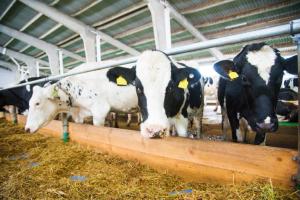
LLNL recently released a report that concluded California can remove as much carbon from the atmosphere as it emits through strategies that include producing and utilizing large amounts of renewable gas from dairies, landfills and sewage treatment plants.
Going underground
Phasing out fossil gas is one of the world’s biggest challenges on the road to a stable climate.
Natural gas is cheap and abundant, and it recently overtook coal as America’s largest electricity source. Although it burns more cleanly than coal, planet-warming emissions from gas are rising faster globally than coal emissions are falling, according to the Global Carbon Project.
But if that natural gas was originally captured at a dairy farm or another industrial source — where it otherwise would have gone into the atmosphere — there’s also an emissions reduction. And because methane traps heat much more powerfully than carbon dioxide does, the planetary benefits of less methane can outweigh the damages from more carbon dioxide.
Lawrence Livermore National Laboratory, recently issued a report that concluded California can achieve its long-term goal of “carbon neutrality” — removing as much carbon from the atmosphere as it emits — at a cost of less than $10 billion per year, through strategies that include producing and utilizing large amounts of renewable gas from dairies, landfills and sewage treatment plants.
The whole thing hinges on capturing and storing the carbon dioxide that bubbles up alongside methane at those facilities — an expensive process that would essentially be subsidized by renewable gas sales.
“If you follow the carbon, it always started from the atmosphere and then was taken up by a plant,” said Sarah Baker, a chemist at Lawrence Livermore and lead author of the report. “And now it’s stored safely underground.”

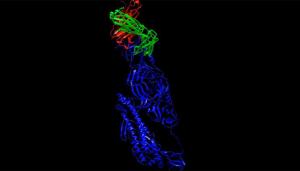
This visualization depicts the 3D structure of an antibody candidate binding to the protein of SARS-CoV-2, the virus that causes COVID-19
Supercomputing takes on COVID-19
The latest episode of the “This Week in HPC” podcast features Jim Brase, who works with the Computing Directorate at Lawrence Livermore National Laboratory. He discussed LLNL’s approaches to fighting COVID-19 on multiple fronts and his own workflow changes as COVID-19 forces LLNL to adjust its day-to-day operation.
Brase said LLNL’s computing is used almost across the board in understanding and building models for how the world can respond to COVID-19. It’s used in analyzing the structure of the virus with systems like X-ray crystallography or cryo-electron microscopy; it’s used in understanding the interaction between the virus and human cells using things like molecular dynamics simulations; and it’s used in identifying targets on the viral proteins or in the co-complexes of the virus with human proteins.
“You go from there to computational design and screening of large sets of molecules, of antibodies, vaccines, all the way to the epidemiological models, flow models of ventilator systems used in hospitals. HPC really is applied across a large area and set of applications for this,” he said.

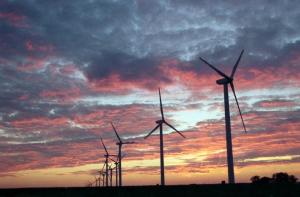
For the second year in a row, wind and solar made up the largest increases in U.S. energy supply.
Energy use dips
Lawrence Livermore National Laboratory’s latest annual energy flow chart suggests that in 2019, for the second year in a row, wind and solar made up the largest increases in U.S. energy supply, but American consumption of energy fell after a record year in 2018.
The national lab’s annual U.S. energy flow chart, or Sankey diagram, is a much-cited single-page reference that compares fuels and their consumption on a common energy unit basis and provides a comprehensive picture of the nation’s energy supply and use. LLNL also publishes energy flow charts for each state, as well as carbon (or carbon dioxide potential) flow and water flow at the national, state, municipal and organizational levels.
The Lab says the charts are used by scientists, analysts and other decision-makers to visualize the complex relationships involved in managing the nation’s resources.
The 2019 chart estimates that Americans last year used 100.2 quadrillion (quads) of British Thermal Units (BTU; 3,412 BTU are equivalent to about 1 kilowatt hour) — slightly lower than the total 101.2 quads consumed in 2018. According to the Lab, in 2018 Americans used more energy than in any other year, surpassing the previous record set in 2007, of 101.0 quads.
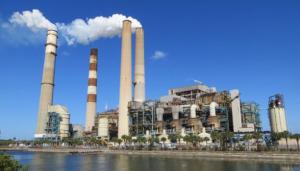
LLNL researchers and collaborators have used an additive manufacturing technique, called cold-spray deposition, to create thermoelectric generators that can harvest waste heat — a huge untapped resource — from previously inaccessible sources.
The heat is on
Thermoelectric materials convert heat to electricity or vice versa. However, their application to harvest waste heat is limited by challenges in fabrication and materials. Finding cost-effective ways to cover large and potentially complex surfaces has remained an issue but is crucial to take advantage of waste heat sources.
Lawrence Livermore National Laboratory material scientists have used an additive manufacturing technique, called cold-spray deposition, to create thermoelectric generators that can harvest waste heat from previously inaccessible sources, such as pipes with complex geometries. The generators display good performance over a wide temperature range.
Waste heat is a huge untapped resource. Thirteen quadrillion BTUs of energy is lost annually through waste heat by U.S. industry. A BTU, or British Thermal Unit, is a unit of measurement for energy; 3,412 BTU are equivalent to about about 1 kilowatt-hour.
But only three quads of BTU are recovered and put to work through co-location of processes, energy recovery through boilers and thermoelectric recovery. One challenge in harvesting the energy is devising a generator that can efficiently harvest the heat. For a thermoelectric material to be effective it must convert temperature gradient into voltage. It also requires high electrical conductivity, but low thermal conductivity.

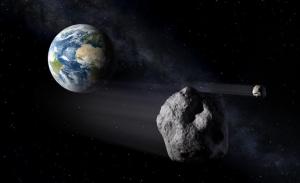
More than 17,000 near-Earth asteroids remain undetected in our solar neighborhood. Image courtesy of NASA.
DARTing asteroids
With simulation tests in full swing, the astrophysicist community is looking forward to the so-called Double Asteroid Redirection Test (DART) mission — the first kinetic impact deflection probe to be carried out on a near-Earth asteroid.
Researchers at Lawrence Livermore National Laboratory have moved further in their efforts to simulate how they might deflect celestial bodies potentially heading toward or potentially hitting Earth (although the latter is highly improbable), with the findings of their recent study.
The scientists conducted their tests by exploiting a smoothed-particle hydrodynamics code named Spheral to carry out an array of simulations that helped the researchers identify which models and material parameters are the most important to accurately simulate impact scenarios involving a potentially hazardous asteroid.





